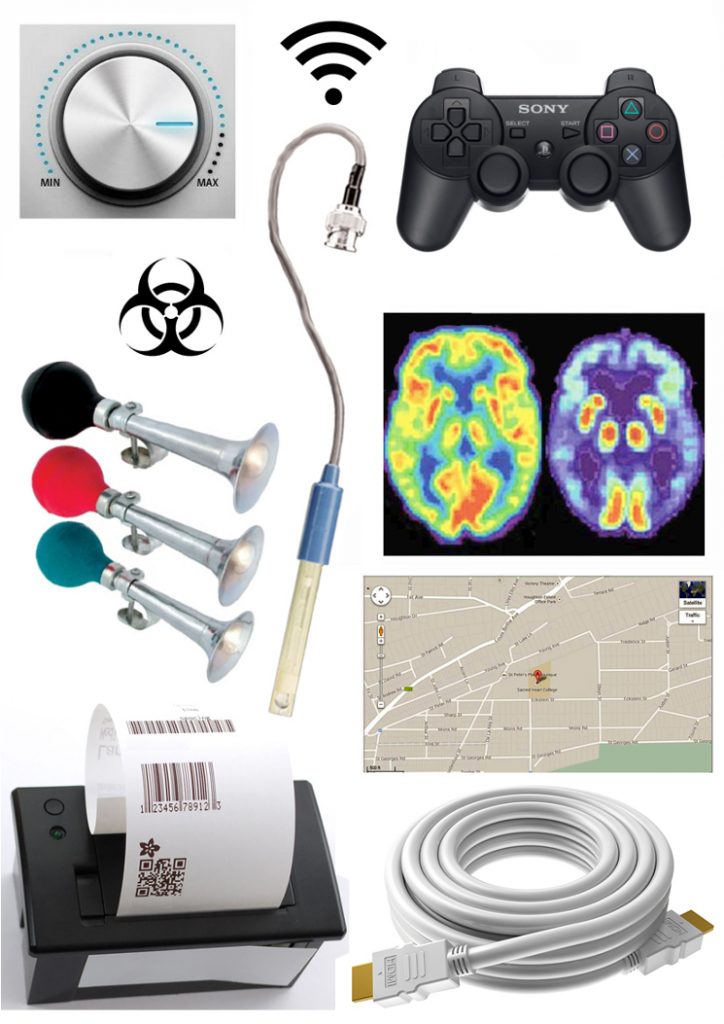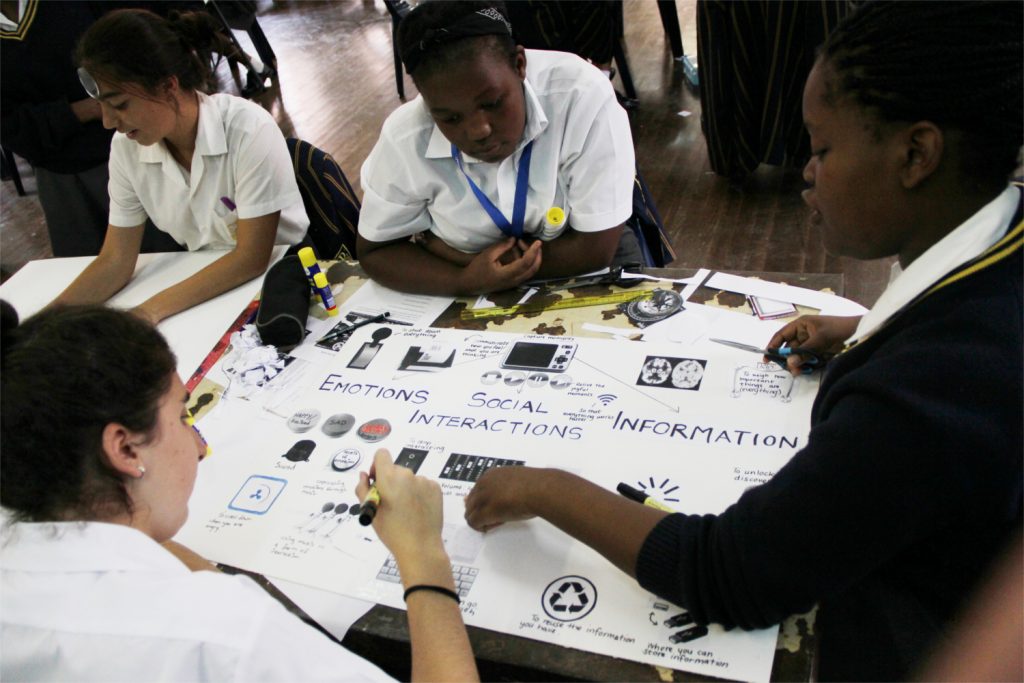This lesson was inspired by something the motivational speaker, Anthony Robbins, said:
Questions are the control to your own experience of life … What makes the biggest difference in life? It’s not the events that shape your life. It’s how you evaluate them. If you change your questions, you change your experience.
We decided that a really cool lesson would be to ask learners to imagine and then build the “control panel of their minds”, a metaphor for the inner structure of their mental life. Once they had done that we could show how it is through asking questions that we are able to manipulate the control panel.
Aim
The aim of the lesson is to help learners visualise and model the ways in which questions can manipulate their experience, practising the transferable skill of asking metacognitive questions. By imagining what the control panel of their mind looks like and what questions they would have to ask to push its buttons, turn its dials and pull its levers, they are able to engage in a metacognitive process of thinking about their own thinking.
Materials
A set of stock images that contain buttons, screens, dials, levers, keys in locks, USB ports, memory sticks, etc. Any components that fit into the metaphor set of a control panel and can provoke interesting and unusual ideas from the learners. Make sure that they are not labelled. The learners will write their own labels showing what aspect of their mind the component represents. Here are some examples you can use (click to download each image).
You will also need a piece of hardboard or cardboard, cut to the size of A3, as well as a few sheets of white A4 paper and scissors, to create a base onto which they can paste their control panel images and label them.
Prestik is better than Pritt as it will enable them to constantly edit their design. For the same reason, it is better to use pencils and rubbers, rather than permanent markers and pens.
Process
STAGE ONE
Divide learners into small groups and give them the materials.
Introduce the metaphor of a control panel, an interface through which the state of a machine can be deliberately changed.
Ask them to design a control panel that they can use to control their minds. What are the key processes and parts of their minds? How are they related to each other? What different states can the parts and processes of their minds be in and how will they represent this? What mechanism best encapsulates how they can consciously manipulate their state of mind? Make it clear that the control panel should help them to:
-
deal with their emotions,
-
process information, and
-
engage social situations.
When we facilitate this workshop we present the learners with our own version of a control panel of the mind, after they have completed their designs. They then compare it to their own and are allowed to make some changes if they want to.
Give each group an opportunity to share their design with the rest of the class.
STAGE TWO
Then ask the learners to look at their control panels and explain how they would press the buttons, pull the levers, turn the dials, etc. They obviously cannot use their hands. What would they use to deliberately manipulate their control panel?
Let the discussion generate ideas. Ask learners to explain their suggestions.
Allow them to arrive at the conclusion that the only way they can press the buttons, pull the levers, and turn the dials, is by asking questions.
You can make the suggestion:
Neuroscience teaches us that most of what consciousness does your unconscious does much better. The one thing that consciousness does better is to ask questions. There is only one way to consciously manipulate the control panel of our minds, and that is by asking questions. Our ability to ask questions about our thought processes, our ability to “think about thinking” and manage those processes, monitoring our thoughts, is called metacognition.
Briefly discuss the idea that asking questions is what consciousness does best. Consciousness is the act of asking, “What is going on?”
Then ask each group to choose a particular device on their control panel and to think of some questions that could manipulate that particular device. Then let groups present their questions to the class.
Questions are tools that can manipulate the “control panel” of your mind
In the lessons we have facilitated, we went back to the control panel we had designed to model the process of asking questions. We handed out a black-and-white version on which all the controls had been numbered so we could discuss them.
- Why do I think I know that for sure? How do I know it?
- Why do I feel like she punched me in the gut when she said that?
- How can I take it seriously, focus and get it done? / How can I stop stressing, let it go and chill?
- What’s the bigger picture here, and what is my role in it?
- Who do I need to tweet about this?
- What more do I need to know before I can make a decision?
- How much power do I really have to change what is going on here?
- What does his response tell me about what’s going on in his head?
- What are the sources of my inspiration?
- What do I need to put into my body so that I can feel, think and act just the way I want to?
- What would this challenge look like if I made the hidden visible and hid what we normally see?
- If I knew I was going to die what would I do? … I do know I am going to die … What now?
- How can I show her that I am prepared to risk being vulnerable and open?
- What’s really going on here on this page?
- How can I improve the questions I ask so that they improve the way I interact with reality?
- What do I want most of all in this moment?
- How can I get my information out there, where it’ll be noticed and valued?
- What details of this experience do I need to tweak to move it closer to my ideal of satisfaction?
- If this really is so harmful to me why can’t I stop doing it and do something different?
- What exactly makes me feel good? How can I get more of that more often?
We then asked learners to choose five controls and try and come up with associated questions that were different from ours.
The Power of Metacognitive Questions
Metacognitive questions can help learners to:
- step back from a situation;
- monitor and manage their thought processes;
- become aware of emotions, acknowledge them, name them and follow them to their source, without becoming them;
- resist impulse and delay gratification (for greater future gratification);
- get more information before choosing or making a decision;
- see the bigger social and environmental context they are in;
- recognise the complex connections and relationships between variables (people,
products, processes and propositions); - consider the consequences over time;
- clarify what they really want;
- consciously and deliberately plan a problem-?solving strategy, define what constitutes success, manage resources, and monitor their progress; and
- ensure the enthusiastic and informed consent of all involved.
Stepping back and asking metacognitive questions is a powerful thinking skill, applicable across all domains, that learners need to master in order to evaluate their values, set their goals, design their plans and monitor their progress. We have found this exercise to be a good way to engage structured self-reflection in learners.
Do you think the metaphor of an app store is more relevant to today’s learners than that of a control panel? How would you design a lesson around that concept, getting learners to model their mental processes as apps? Please feel free to share your thoughts below.










